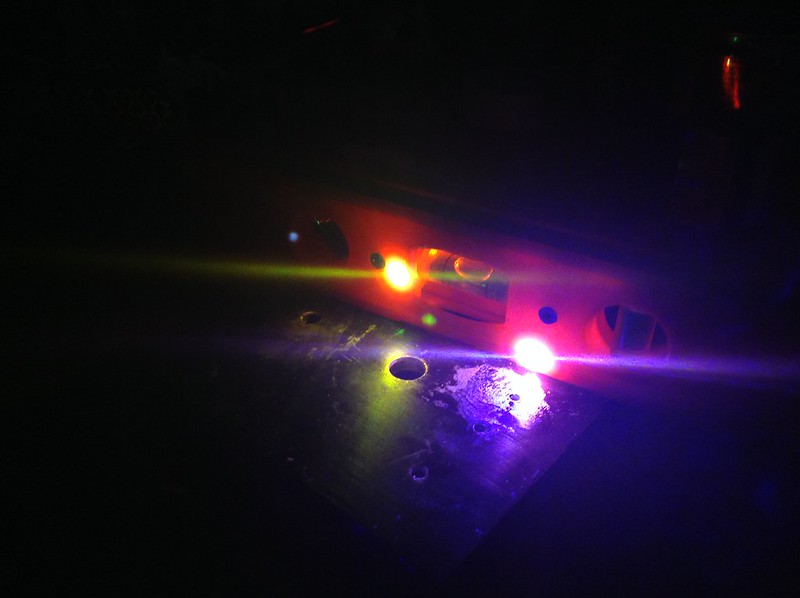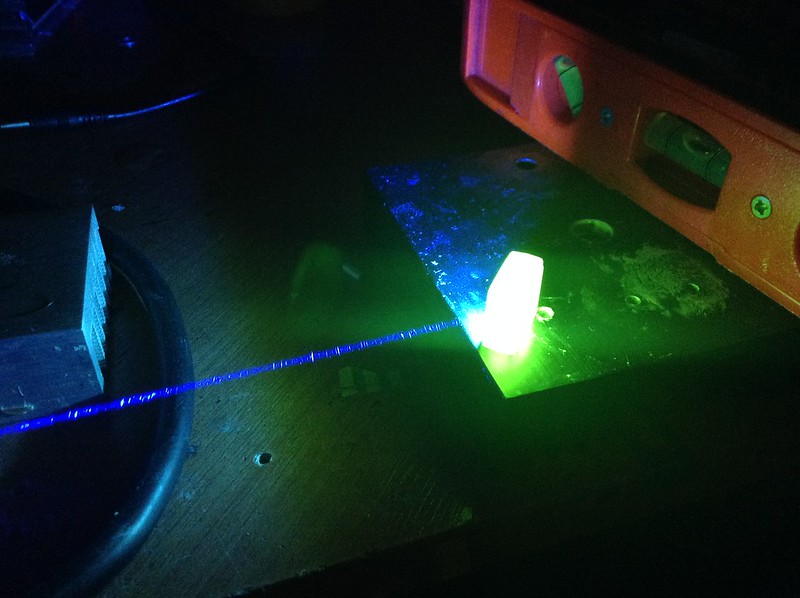KabaT
0
- Joined
- Jan 25, 2014
- Messages
- 10
- Points
- 0
AFAIK green laser diodes are just infrared emitters with the crystal shortening the wavelength by half. Am I wrong?
And why my 405nm laser seems to fluorescing much more than green one, on more kinds of surfaces and much brighter?
Sorry for somewhat newbie questions, I am new to lasers, but started studying photonics, so I am trying to get most information I can about laser stuff.
And I am wondering why this 405nm lasers on pickles has violet spot. On all layers on which the color is changed the resulting color is the one thing has. But pickles are green and it's very non-violet color.
And why my 405nm laser seems to fluorescing much more than green one, on more kinds of surfaces and much brighter?
Sorry for somewhat newbie questions, I am new to lasers, but started studying photonics, so I am trying to get most information I can about laser stuff.
And I am wondering why this 405nm lasers on pickles has violet spot. On all layers on which the color is changed the resulting color is the one thing has. But pickles are green and it's very non-violet color.
Last edited:





